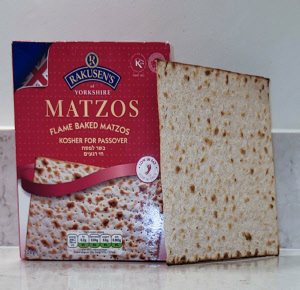ICJudaism: A Teacher’s Guide to Judaism
Hosted by ICTeachers Formerly: Mike’s Rough Guide to Judaism
Disclaimer:
The contents of these pages represent the author’s personal views, experience and
understanding.
There are bound to be some things here that some Jews would disagree
with.
Passover (Pesach)

Passover, which Jews call Pesach, is an 8-
Pesach is one of the 3 pilgrim festivals, when, in biblical times Jews would travel to the temple in Jerusalem to celebrate a harvest, in this case of barley. This harvest festival long ago became combined with the remembrance of the Exodus from slavery in Egypt. In temple times the festival involved animal sacrifice, but after the destruction of the Temple in 70 CE such sacrifices ceased and the celebration became formalised around the Seder (pronounced Sayder) meal.
Pesach has many traditions, ceremonies and much symbolism attached to it. It is a celebration of freedom, a time of family gathering, and a time to reaffirm and celebrate the continuity of Jewish cultural and religious identity. It is also a time when we stress the importance of teaching our history and traditions to our children.
The central ceremony of Pesach is the Seder, a meal whose many rituals centre on
a multi-
The central symbol of Pesach is Matzo (pronounced either mutza or motzah), the unleavened bread which we are required to eat instead of normal bread, together with a number of other special dietary restrictions that are peculiar to Pesach. Pesach is sometimes known as Chag Hamatzo (The Festival of Unleavened Bread).
If you have never eaten (or even seen) matzo, it comes as flat sheets very like la rge
water biscuits, but not quite so hard. Matzot are traditionally square or round,
but there are no rules that I know of that dictate their shape. On the other hand
there are many rules connected with their preparation. One of the elements of the
Passover story is that the hurried exodus of the Children of Israel from their homes
in Egypt prevented them having time to let their bread rise so they baked unleavened
bread for the journey instead. We are bidden to eat no leaven for the whole 8 days
of the festival and hence there are many rules, regulations and customs about disposing
of Chametz (leaven) from our homes and about ensuring that nothing we eat has had
a chance to ferment. (Thus beer and whisky are forbidden during Pesach -
rge
water biscuits, but not quite so hard. Matzot are traditionally square or round,
but there are no rules that I know of that dictate their shape. On the other hand
there are many rules connected with their preparation. One of the elements of the
Passover story is that the hurried exodus of the Children of Israel from their homes
in Egypt prevented them having time to let their bread rise so they baked unleavened
bread for the journey instead. We are bidden to eat no leaven for the whole 8 days
of the festival and hence there are many rules, regulations and customs about disposing
of Chametz (leaven) from our homes and about ensuring that nothing we eat has had
a chance to ferment. (Thus beer and whisky are forbidden during Pesach -
Matzo is quite delicious and you can often find it in supermarkets in amongst the crackers and cheese biscuits (even in areas where there are no Jewish communities). It is can be used in most of the ways that bread is used (but probably not toasted!). My favourite way of having it is buttered, held under a cold tap for a second or two, just to soften the bits the butter missed, and then sprinkled with a little salt to taste. (mind you the rest of my family thinks I am mad to eat it that way!).
A popular Pesach recipe is matzo brei (pronounced bray), a breakfast dish which is
essentially eggy-
Matzo is an essential ingredient of several Jewish foods. In particular crushed matzo (you can buy matzo meal in various degrees of coarseness) is used to coat fish before frying. The fish is dipped in beaten egg and then in seasoned matzo meal. Much better (in my view) than batter, and soaks up less oil, so healthier.
A modern tradition among Jewish youth clubs is the Matzo Ramble (a country walk with packed lunch of matzo sandwiches).
Return to the main menu... More...